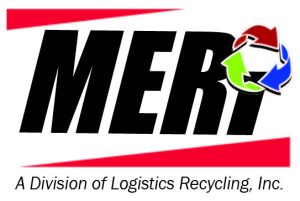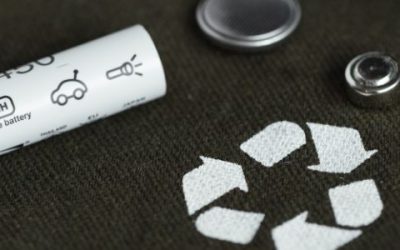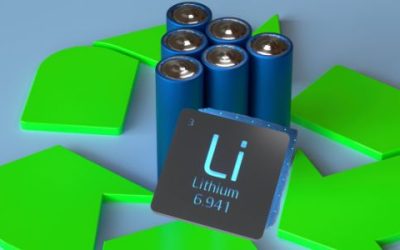Creating a dedicated space is likely the trickiest part of setting up a Universal Waste collection area. Waste rooms are often tight quarters. However, having a section to collect universal waste, with proper containers and labels, will pay off in the long run for your facility.
Why? Because knowing what universal waste goes where saves time. It also saves your facility money as it won’t be slapped with fines for improperly managing universal waste items like:
- hazardous waste bulbs,
- batteries,
- oils,
- pesticides,
- antifreeze
- mercury containing devices.
To help, MERI is offering this free universal waste poster. It sums up the various items that need special handling and storage protocols.
How to Set Up a Universal Waste Collection Area
There are four main points to keep in mind when setting up a universal waste collection area:
- Employees must be training in proper universal waste handling. This training must be documented.
- Containers must be leak-proof and have lids on them (batteries and bulbs in non-metal containers).
- Labels must be correctly labeled of what is in the container and dated when the first item was placed in the container.
- Containers must be removed from the facility for recycling no later than 1 year after first item placed in the container.
Let’s take a look at the six main types of universal waste items, along with a photo of what they might look like in a storage area. Note that all do not need to be in one room. Some might be stored in an outdoor shed. Other containers may be located in or near your medical waste room.
Mercury Containing Equipment
This includes things like thermostats, barometers, mercury switches, old silver thermometers, and mercury containing devices.
The label on this non-metal container should read: “Waste Mercury Containing Equipment.” According to the WI DNR’s mercury- containing equipment storage guidelines, It might look like this
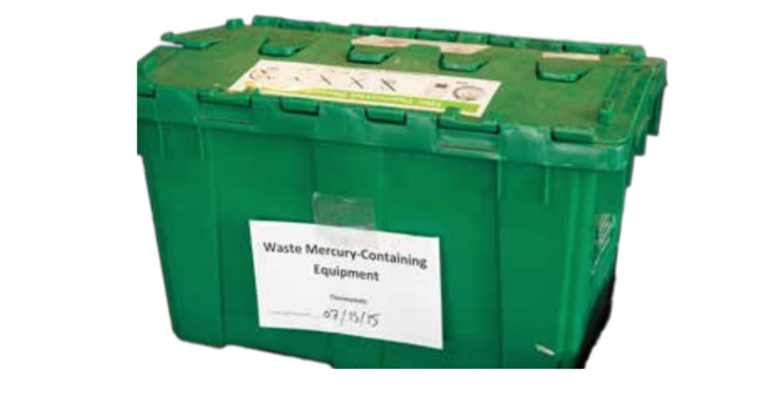
Batteries
This includes things like lithium, lithium ion, button, silver oxide, mercury oxide, nickel-metal hyride and sealed lead acid batteries. Tape the battery terminal ends and place in a non-metal container. Alkaline batteries can be placed in the regular recycling container or placed in the trash.
The label on this non-metal container should read: “Waste Batteries.” To help organize batteries, it would be a good idea to have separately marked containers with the type of battery in them. According to the WI DNR’s battery storage guidelines, It might look like this:
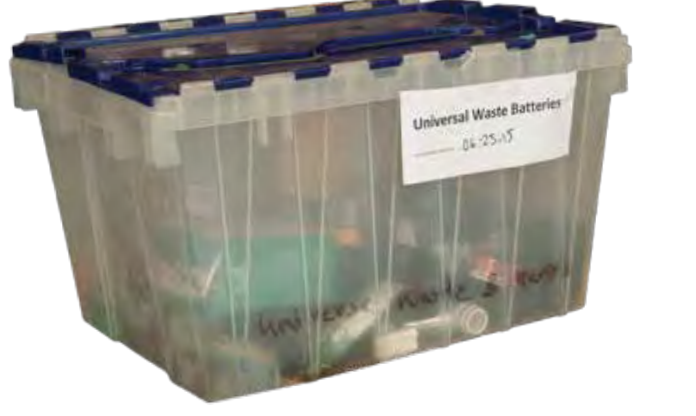
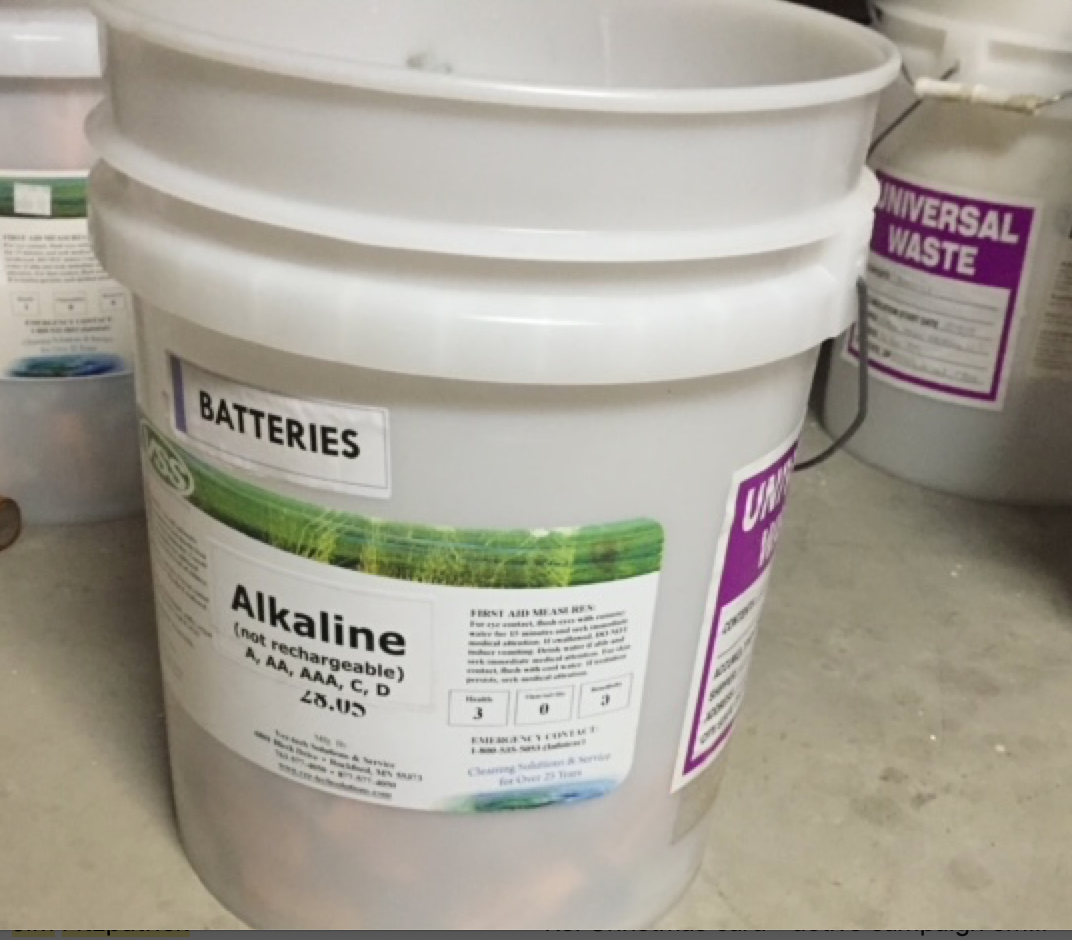
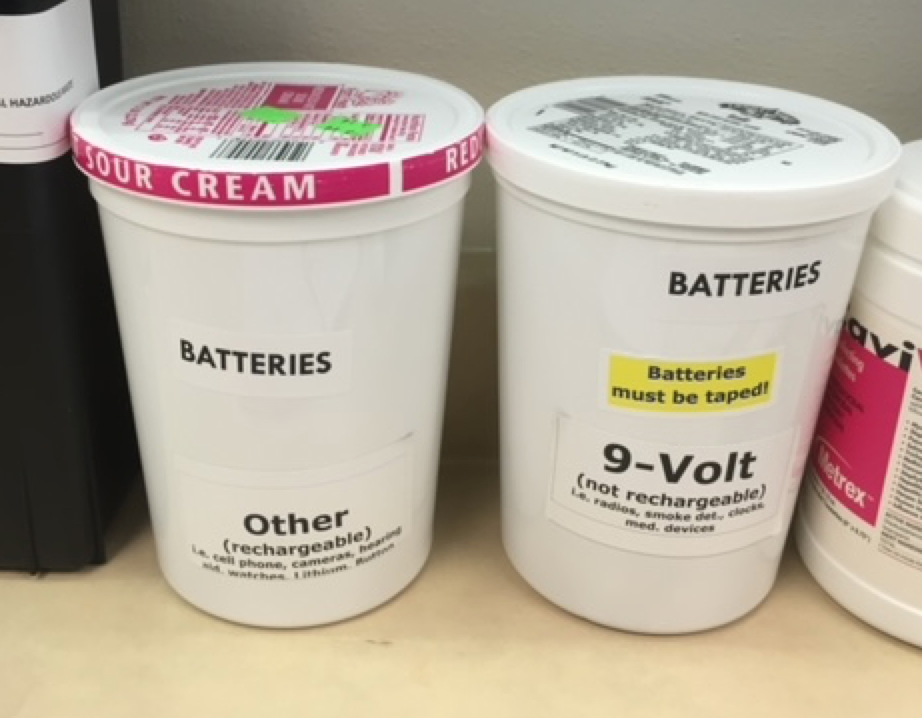
Lamps (Lightbulbs)
This includes things like fluorescent, mercury vapor, metal halide, high pressure sodium vapor, UV, neon, blacklight and LED lamps. Secure to prevent breakage and place in a non-metal container.
The label on this non-metal container should read: “Waste Lamps.” According to the WI DNR’s lamp storage guidelines, It might look like this:
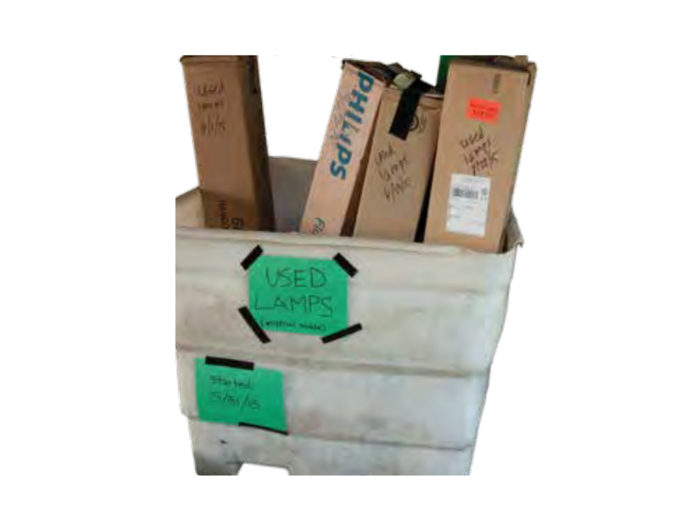
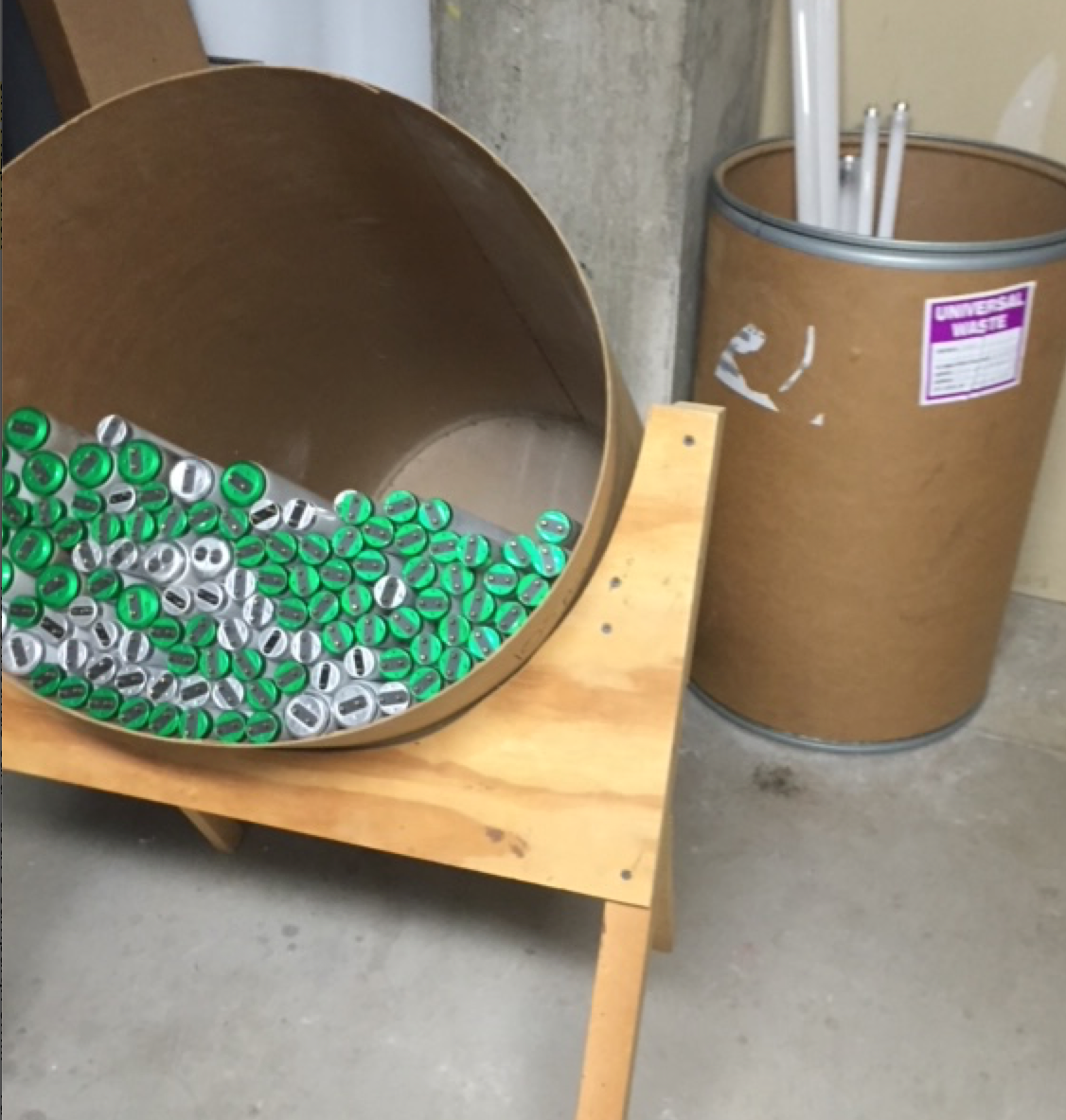
Used Oils
This includes any used oil. Do not mix oil with any other chemicals as this can’t be recycled. If a spill occurs, clean with absorbent material and store in a separate container.
The label on this non-metal container should read: “USED OIL.” Make sure the label does not say “Waste Oil.” This WI DNR used oil guidance is a helpful read. Your area might look like this:
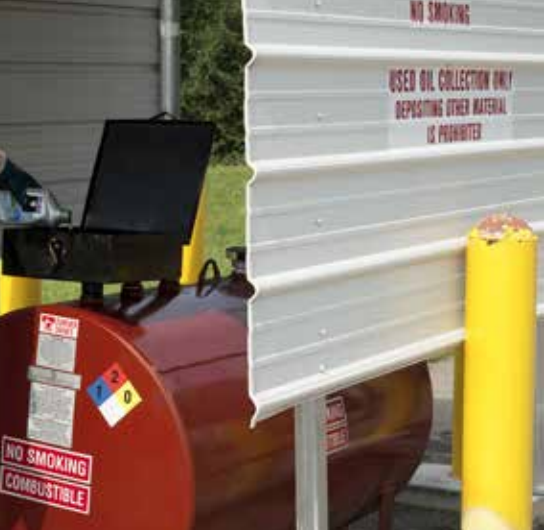
Antifreeze
Do not mix antifreeze with any other chemicals as it can no longer be recycled.
The label on this container should read: “Used Antifreeze.” According to the WI DNR’s antifreeze storage guidelines, It might look like this:
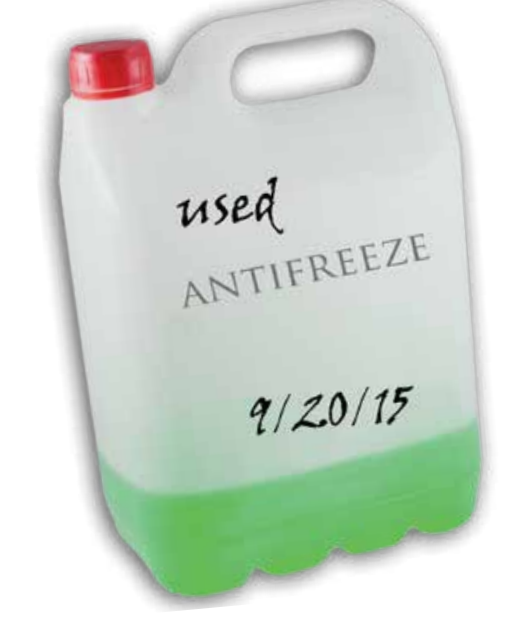
Pesticides
This covers pesticides that are recalled, banned, unused or leftover in a spray tank. Ideally, the original product label will be on be on each container item.
The label on this container should read: “Waste Pesticides.” According to the WI DNR’s pesticide storage guidelines, it might look like this:
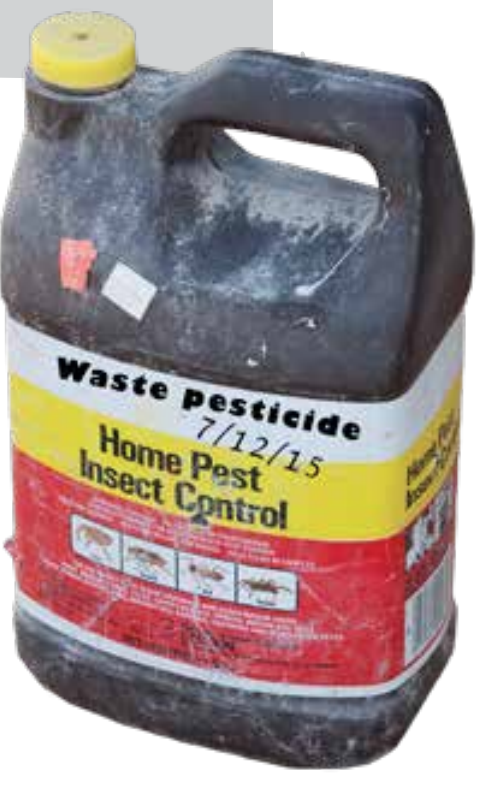
Remember, the most important thing to do is to to have leak-proof containers which that have the correct label description on them, along with the date the first item entered each container. They must be removed from the facility for recycling no later than 1 year after first item placed in the container.
MERI’s free universal waste free poster may help you to quickly identify and how to label your containers. Feel free to connect with us below to have one sent to your email.
To fulfill your training requirement of the proper handling of hazardous materials, MERI offers semi-annual, certified training classes. Send us an email at info@meriinc.com if you are interested in attending our next one.
As always, give us a call at 608-257-7652 if you have any questions, or reach out using our contact us page.
###
